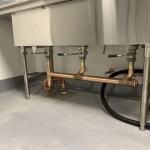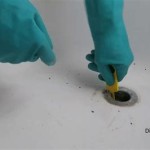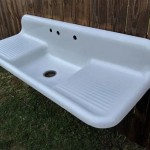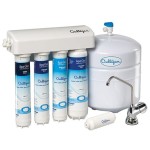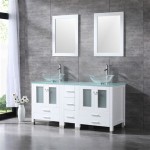```html
How To Unclog A Slow Draining Bathroom Sink
A slow-draining bathroom sink is a common household plumbing issue. It often stems from a gradual accumulation of hair, soap scum, toothpaste, and other debris within the drainpipe. While a completely blocked drain requires immediate attention, a slow drain typically indicates a developing obstruction that can be resolved with various methods, often without the need for professional plumbing services. This article provides a comprehensive guide to identifying the cause of a slow-draining sink and detailing several effective unclogging techniques.
Before initiating any unclogging method, it is prudent to understand the potential cause of the drainage issue. Hair is a frequent culprit, particularly in sinks used for shaving or washing hair. Soap scum, formed from the reaction of soap with hard water minerals, also contributes to blockage buildup. Toothpaste, while seemingly innocuous, can solidify over time and bind with other debris, further constricting the drainpipe. Understanding these common causes allows for a more targeted and effective approach to clearing the blockage.
Identifying the Cause of the Slow Drain
The initial step in addressing a slow-draining sink involves a visual inspection. Examine the sink stopper for visible debris. Hair and other materials frequently accumulate around the stopper mechanism, restricting water flow. Removing the stopper allows for a closer examination of the drain opening itself. Use a flashlight to illuminate the inside of the drainpipe and identify any visible obstructions near the surface. This visual assessment can provide clues about the nature and location of the blockage, guiding the subsequent unclogging efforts.
Another method involves checking the overflow drain. This small opening, typically located near the top of the sink basin, serves as a vent to prevent overflowing. However, it can also accumulate debris. Pour a small amount of water into the overflow drain. If the water drains very slowly or not at all, it indicates a partial or complete blockage within the overflow drainpipe itself. This blockage can contribute to the overall slow drainage of the sink, even if the main drainpipe is relatively clear.
The speed at which the sink drains can also provide diagnostic information. If the sink drains very slowly but eventually empties, it suggests a partial blockage. If the water pools in the sink and takes an extended period to drain, it indicates a more significant obstruction. If the sink does not drain at all, even after an extended period, it points to a complete blockage that requires more aggressive unclogging techniques.
Simple Unclogging Techniques
Several simple techniques can often resolve minor clogs. Starting with the least invasive method is recommended to avoid unnecessary disruption to the plumbing system. These techniques primarily focus on dislodging or dissolving the blockage without resorting to harsh chemicals or disassembly of the drainpipe.
Hot Water Flush: The simplest approach is to flush the drain with hot water. Boiling water is even more effective, but caution is necessary to avoid burns. Pour a kettle or pot of hot water directly into the drain opening. The heat can help to dissolve soap scum and loosen other accumulated debris, allowing the water to flush the blockage down the drain. Repeat this process several times, allowing the water to sit in the drain for a few minutes between each flush to maximize its effectiveness.
Baking Soda and Vinegar: A combination of baking soda and vinegar creates a natural, mildly abrasive solution that can help to break down clogs. First, pour about one cup of baking soda down the drain, followed by one cup of white vinegar. The mixture will fizz and bubble, which is a normal chemical reaction. Allow the mixture to sit in the drain for approximately 30 minutes. Afterward, flush the drain with hot water. The baking soda and vinegar react to create carbon dioxide, which can help to dislodge the blockage. This method is generally considered safe for most types of plumbing pipes.
Plunger: A standard cup plunger can effectively dislodge clogs in bathroom sinks. Ensure there is sufficient water in the sink to cover the cup of the plunger. Create a tight seal around the drain opening with the plunger cup. Vigorously plunge up and down for several minutes, maintaining the seal. The pressure created by the plunging action can help to dislodge the blockage and push it down the drain. If the sink has an overflow drain, cover it with a wet cloth or your hand to prevent air from escaping, which reduces the effectiveness of the plunger.
More Advanced Unclogging Methods
If the simple techniques are unsuccessful, more advanced methods may be necessary. These methods often involve direct physical removal of the blockage, requiring the use of specialized tools or disassembly of the drainpipe. Exercise caution when using these methods to avoid damaging the plumbing fixtures or pipes.
Wire Coat Hanger: A straightened wire coat hanger can be used to manually remove visible debris from the drainpipe. Straighten the coat hanger, leaving a small hook at the end. Carefully insert the hook into the drain opening and probe for any visible debris. Gently pull out any hair, soap scum, or other materials that are caught on the hook. Be cautious not to push the blockage further down the drain. This method is most effective for removing obstructions that are located near the surface of the drainpipe.
Plumbing Snake (Drain Auger): A plumbing snake, also known as a drain auger, is a flexible tool specifically designed to reach deeper into drainpipes and remove stubborn clogs. Insert the end of the plumbing snake into the drain opening and carefully feed it down the drainpipe. Rotate the handle to advance the snake further into the pipe. When you encounter resistance, indicating a blockage, continue rotating the handle to break up or hook onto the obstruction. Once the blockage is dislodged, slowly retract the plumbing snake, pulling out any debris that is caught on the end. Flush the drain with hot water to ensure the blockage is completely cleared.
P-Trap Removal: The P-trap is the curved section of pipe located under the sink. It is designed to trap debris and prevent sewer gases from entering the bathroom. Removing the P-trap allows for direct access to the drainpipe and easy removal of accumulated debris. Place a bucket or container under the P-trap to catch any water or debris that may spill out. Loosen the slip nuts that connect the P-trap to the drainpipes. Carefully remove the P-trap and clean out any accumulated debris. Reinstall the P-trap, ensuring the slip nuts are tightened securely to prevent leaks.
Chemical Drain Cleaners: Chemical drain cleaners contain harsh chemicals that can dissolve clogs. However, these chemicals can also damage plumbing pipes, especially older pipes made of PVC or metal. Furthermore, they pose a risk to human health and the environment. Therefore, chemical drain cleaners should be used as a last resort, and only when other methods have failed. Always follow the manufacturer's instructions carefully when using chemical drain cleaners. Wear appropriate safety gear, such as gloves and eye protection. Ensure adequate ventilation to avoid inhaling harmful fumes. Avoid mixing different types of chemical drain cleaners, as this can create dangerous reactions.
Prevention is Key: After successfully unclogging the drain, implementing preventive measures can help to avoid future clogs. Install a drain strainer to catch hair and other debris before they enter the drainpipe. Regularly flush the drain with hot water to prevent the buildup of soap scum. Avoid pouring grease or oil down the drain, as these substances can solidify and cause clogs. Periodically clean the sink stopper and overflow drain to remove accumulated debris.
```
How To Unclog A Slow Running Bathroom Sink Drain 10 Options

How To Unclog A Slow Running Bathroom Sink Drain 10 Options

How You Can Fix A Slow Draining Drain On Your Own Call Ashton Plumbing

How To Unclog A Sink The Right Way Youtube

5 Natural Ways To Unclog A Bathroom Sink Hiller How

Slow Sink Drain 6 Diy Fixes For Before You Call A Plumber Bob Vila

How To Unclog A Drain Without Calling Plumber

4 Tips To Fix A Slow Draining Sink

How To Unclog A Bathroom Sink Hana S Happy Home
How To Unclog A Sink 4 Easy Ways

